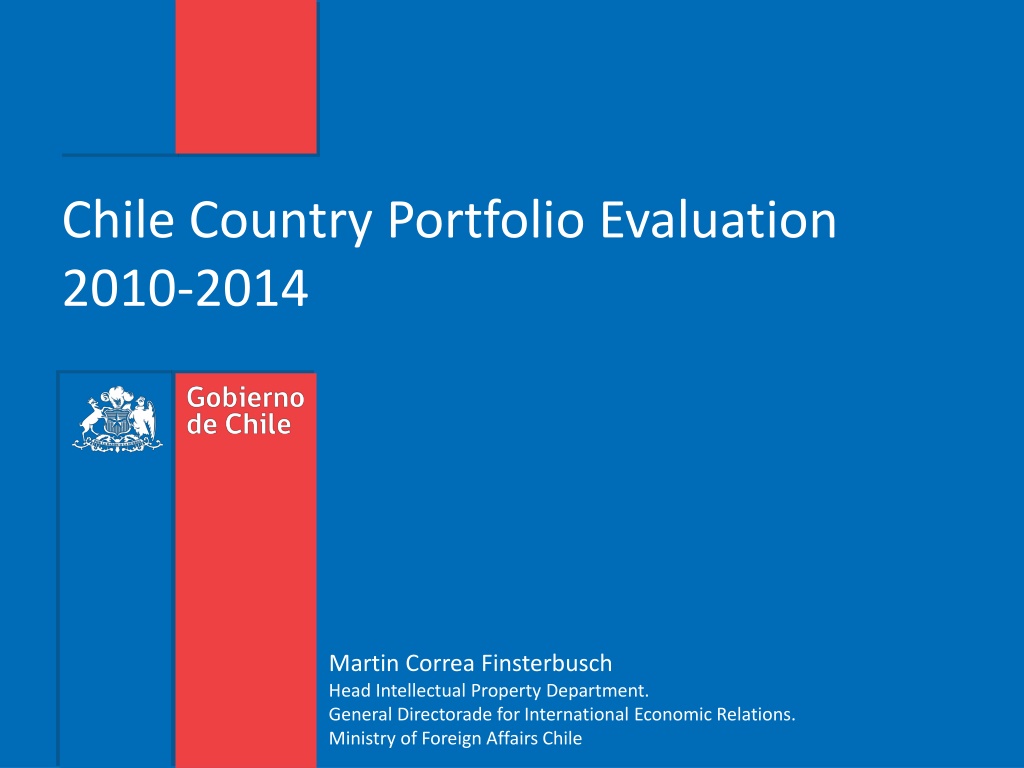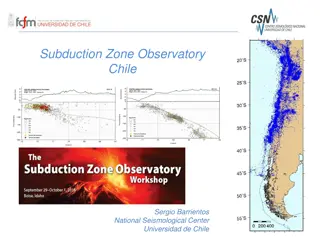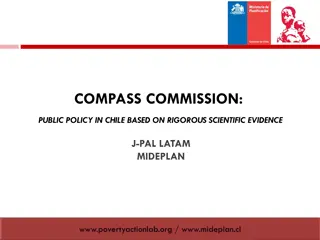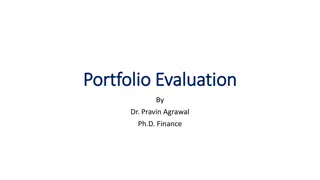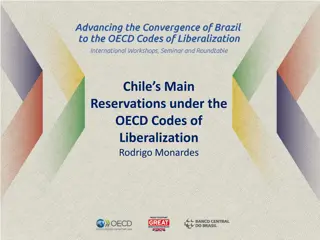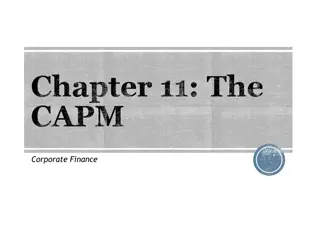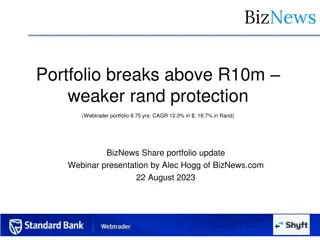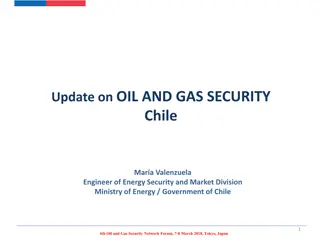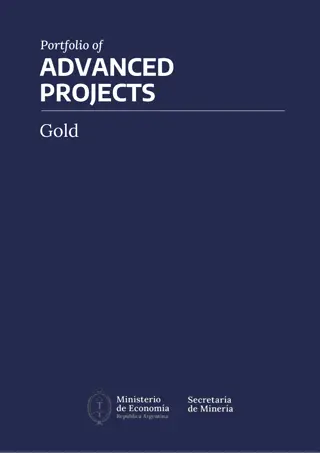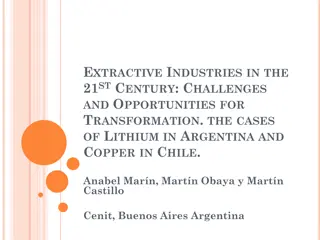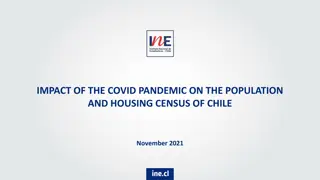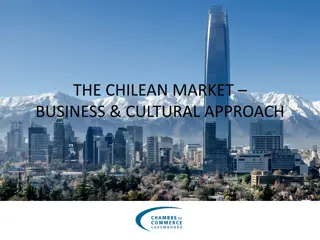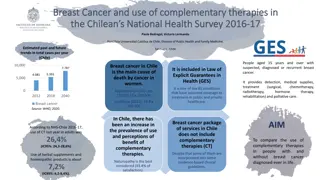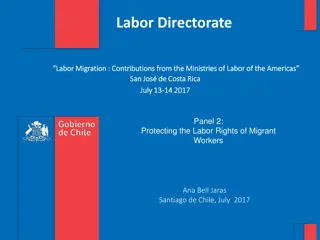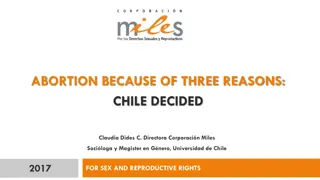Chile Country Portfolio Evaluation 2010-2014 Summary
Evaluation process of Chile's country portfolio from 2010-2014 included pre-evaluation, during evaluation, and results/conclusions phases. Challenges like defining scope and participant concerns were addressed. Preliminary conclusions were presented to stakeholders, leading to a trustful and representative final report. The evaluation provided insights into improving WIPO cooperation activities, creating awareness, and enhancing future focus areas.
Download Presentation

Please find below an Image/Link to download the presentation.
The content on the website is provided AS IS for your information and personal use only. It may not be sold, licensed, or shared on other websites without obtaining consent from the author. Download presentation by click this link. If you encounter any issues during the download, it is possible that the publisher has removed the file from their server.
E N D
Presentation Transcript
Chile Country Portfolio Evaluation 2010-2014 Martin Correa Finsterbusch Head Intellectual Property Department. General Directorade for International Economic Relations. Ministry of Foreign Affairs Chile
General overview: Challenges and conclusions from the evaluation process. Pre- evaluation During evaluation Results and conclusions
Pre-evaluation. Understanding the scope of the portafolio evaluation. Questions were raised among all our local agencies regarding the scope of the process and the rationale behind having an evaluation process. Why should we evaluate? A large mayority of the participants in the evaluation process were government officials. However, the Country Portfolio Evaluation also included stake holders and civil society and therefore it provided with an opportunity for stakeholders to interact with WIPO. Who is going to participate in the evaluation process? A common concern among the proposed participants was whether this evaluation would somehow measure their internal work. Who is being evaluated?
During evaluation. Coordination of interviews. Once the participants understood the objective of the evaluation, many stakeholders, civil society, NGOs, government officials and judicial authorities wanted to participate. This required that the evaluation team had to arrange a series of interviews with all the participants Preliminary conclusions presentation. Expectations regarding the preliminary conclusions. The presentation with preliminary conclusions allowed participants to know their opinions were considered.
Results and conclusions. A trustful and representative report. The report included the visions of all participants including stakeholders, civil society, NGOs, government official and WIPO, therefore its conclusions considered all opinions and views. One of the most important elements of this exercise was to have the opportunity to see WIPO s views regarding the cooperation activities. A useful tool for improving cooperation activities. The information provided in the report helped us to get a better understanding of WIPO framework for cooperation activities as well as providing us with a clear picture of what our country has already done in the field of cooperation and were should we focus in the future in order to improve the way cooperation is done. A way to create awareness of WIPO in our country. The process of evaluation allowed stake holders to become more familiar with WIPO, the services it provides and the role it has in the world IP systems.
